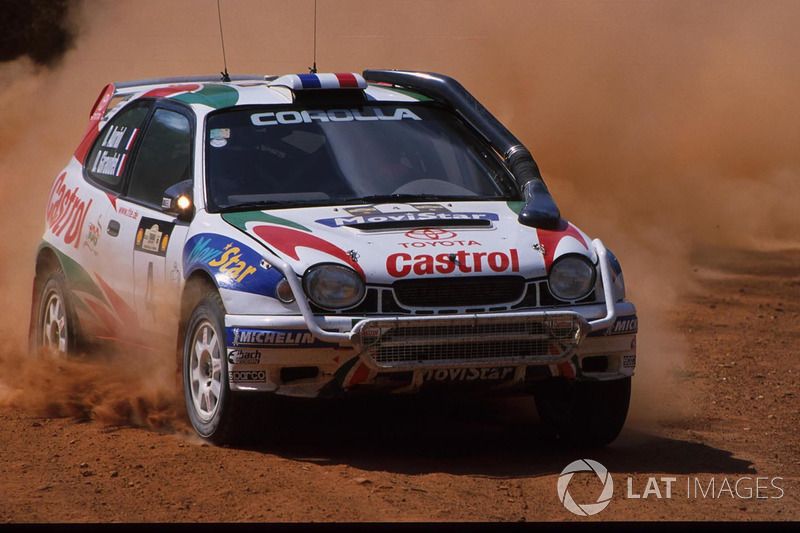A change in FIA regulations that coincides with the Safari Rally moving to a more traditional March date in Kenya’s rainy season has allowed Rally1 teams to fit these devices to cars for the first time.
Snorkels have long been a feature in the WRC and have been particularly associated with the Safari Rallys of the past. Perhaps the most iconic illustration of these in action is the now famous vision of a Toyota Celica submarining through one of Kenya’s notorious mud holes in the mid-1990s.
The protruding intakes that rise into the air from the bonnets of rally cars have proven to be a necessary piece of kit for tackling the most gruelling event on the WRC calendar.
Once again they could prove to be valuable this weekend with Toyota, Hyundai and M-Sport-Ford adding these systems to their Safari Rally survival kits.
A snorkel is a device designed to protect the engine from ingesting water or dust, which may affect combustion and can even severely damage the engine. It is particularly effective at the Safari Rally, which features thick fesh-fesh sand and deep water splashes.
Carlos Sainz, Luis Moya, Toyota Corolla WRC
Photo by: Sutton Images
The frequency of the latter is anticipated to be much higher for this year’s edition due to the threat of heavy rain showers given the event is now held in the rainy season.
It only takes one split-second moment in these conditions for an engine to flood, ending victory hopes in a heartbeat, ensuring that snorkels could potentially be crucial bits of kit.
How do the snorkels work?
The snorkel essentially enables the engine an obstructed route to suck in clean air. Operating the device falls into the hands of the co-driver, who in M-Sport’s case touches a button in the cockpit to activate the system if conditions become treacherous.
These systems can be activated throughout an entire stage, but this will come at the cost of a performance advantage, so drivers will only use them when necessary.
“Basically, the aim of the snorkel is to have an auxiliary air intake and we know in Kenya you can get a lot of soft sand called fesh-fesh and often it comes up over the car.
“Equally, we know with the event being earlier in the season than normal, the chance of it being wet, as the guys found on the recce, can be pretty high,” M-Sport’s lead development engineer Tim Jackson explained to Motorsport.com.
“The main task of it is to have an auxiliary air intake to make sure that the air coming…
Click Here to Read the Full Original Article at Motorsport.com – RALLY – Stories…

